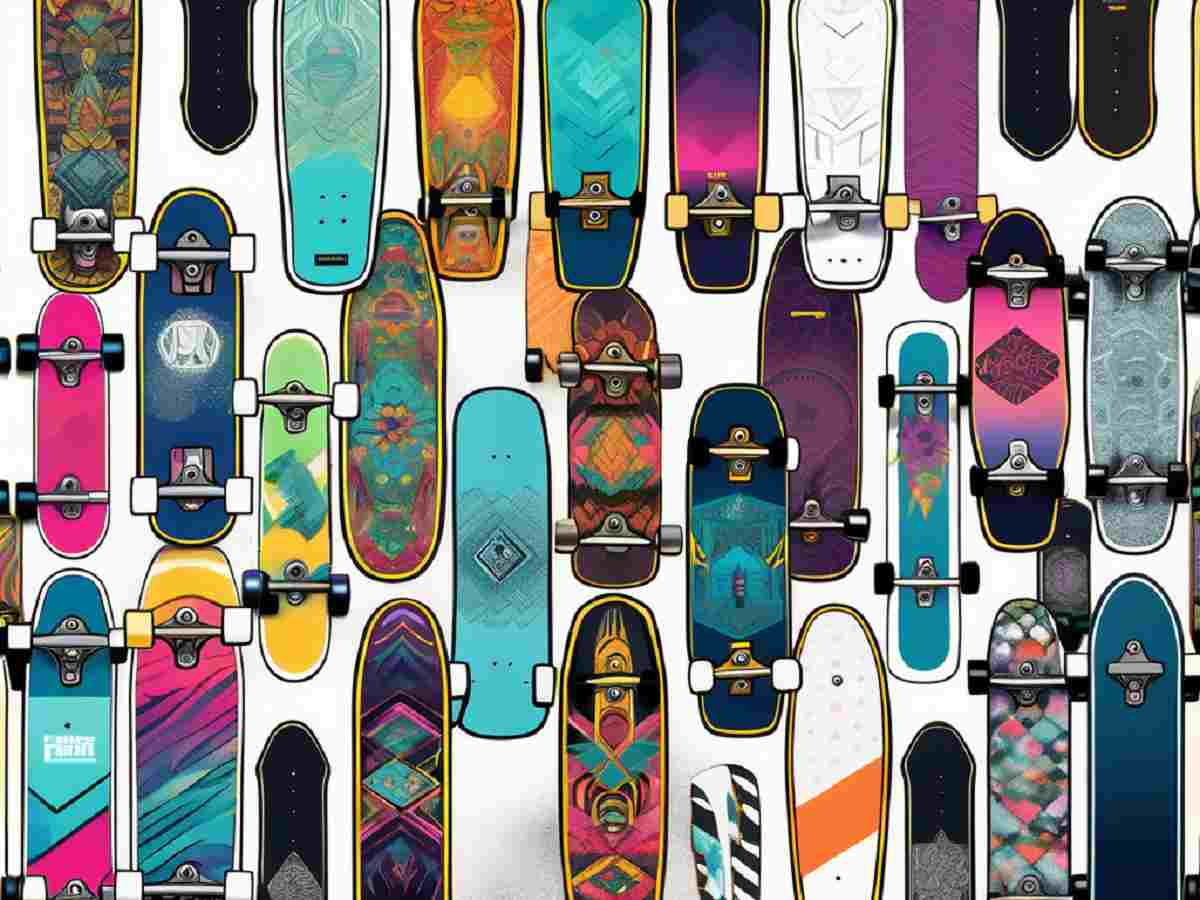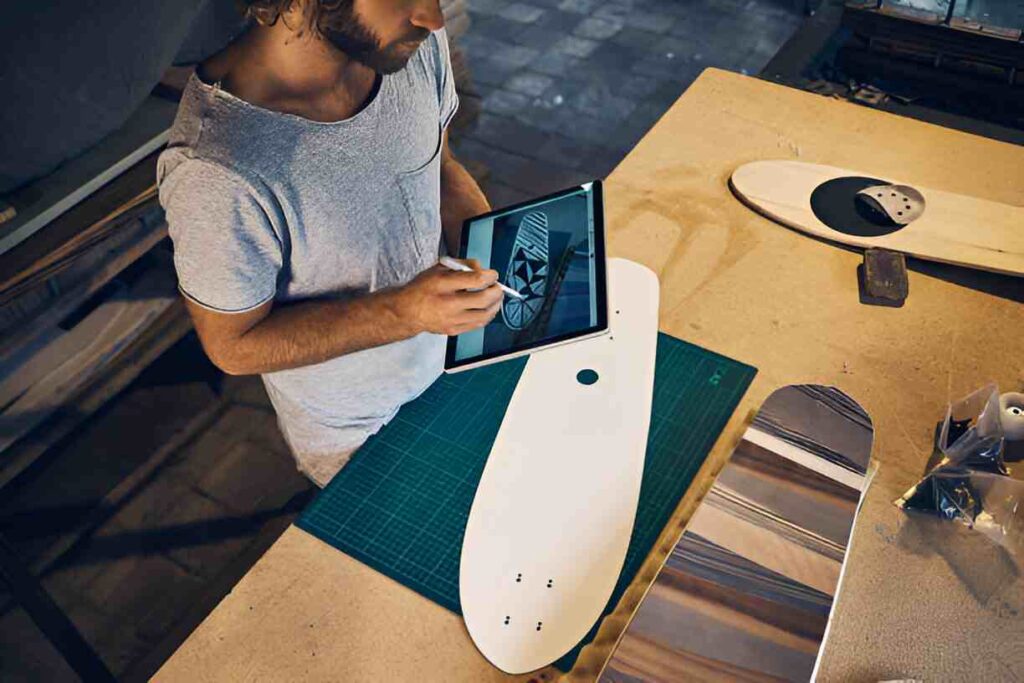
Essential tools for crafting your custom Tech Deck.
Custom tech decks have transformed from simple toys into a respected form of artistic expression. Originally designed for finger skating, these miniature skateboards have captivated enthusiasts since the late 1990s. What started as a childhood pastime quickly turned into a creative outlet for many as they began experimenting with color, design, and personal style.
In the early days, tech decks offered limited designs and colors. However, as the community grew, so did the demand for more innovative and unique boards. Various artists started creating custom graphics, using different materials to enhance performance and aesthetic appeal. This evolution reflects broader trends in the DIY movement, where individuality and personal expression are paramount.
Tech deck Community Expanded
As the tech deck community expanded, so did the techniques used to create these custom boards. Enthusiasts began to explore advanced methods such as hydro dipping, airbrushing, and even laser engraving, allowing for intricate designs that were previously unimaginable. The introduction of social media platforms provided a stage for these artists to showcase their work, fostering a vibrant community where ideas and techniques could be shared and celebrated. This interconnectedness not only inspired new designs but also encouraged collaborations between artists, leading to the birth of limited-edition releases that collectors eagerly sought after.
Moreover, the rise of online marketplaces has made it easier for artists to sell their custom tech decks, transforming what was once a niche hobby into a viable business opportunity. Many creators have turned their passion into full-fledged brands, offering everything from custom grip tape to unique deck shapes. This commercialization has not only elevated the status of tech decks as collectibles but has also sparked discussions about the intersection of art, commerce, and the culture of skateboarding. As a result, the landscape of custom tech decks continues to evolve, reflecting the diverse influences and creativity of its community.
Essential Tools and Materials for Crafting Your Own Tech Deck
Creating a custom tech deck requires a modest set of tools and materials. Understanding what to use is crucial for both beginners and experienced creators alike.
- Deck Material: High-quality plywood or resin is essential for durability and performance.
- Graphics Supplies: Markers, paints, and stickers allow for personalized designs.
- Sandpaper: To smooth edges and provide grip for better handling.
- Clear Coat: A protective layer that gives the board a polished look.
- Trucks and Wheels: These components must be lightweight yet durable, as they affect the board’s overall performance.
With these tools, you can easily explore the possibilities of customizing your tech deck, whether you’re creating art or refining skating techniques.
Step-by-Step Guide to Designing Your Unique Tech Deck
Designing your tech deck can be a gratifying process. Here’s a simplified step-by-step guide to help navigate your creative journey:
- Choose Your Deck: Pick a base that resonates with your style—consider dimensions and shape.
- Prepare the Surface: Sand the deck to ensure a smooth finish and good paint adhesion.
- Sketch Your Design: Plan your artwork. You might want to outline designs with a pencil before applying any colors.
- Apply Base Colors: Use spray paint or paint pens for vibrant base colors. Allow sufficient drying time after each layer.
- Add Details: Incorporate graphics using markers or stickers. This step brings your unique vision to life.
- Seal Your Design: Apply a clear coat for protection and shine. It also enhances longevity.
By following these steps, you’ll create a tech deck that reflects your personality and creativity, making it truly one-of-a-kind.
Popular Customization Techniques: Paint, Graphics, and More
Customization opens a world of possibilities. Artists use diverse techniques to bring their tech decks to life:
- Airbrushing: Offers smooth gradients and professional-looking designs.
- Decoupage: Combining various materials like paper and fabric to create layered effects.
- Vinyl Cutting: Precision cut designs that can be applied as decals for a clean finish.
- Stenciling: Using stencils can help achieve intricate designs that might otherwise be difficult to paint freehand.
Experimenting with these techniques can diversify your skill set and enhance the final product of your tech deck.
The Role of Community in the Custom Tech Deck Scene
The custom tech deck community plays a pivotal role in the evolution and popularity of this art form. Online platforms and social media groups have fostered a supportive environment where enthusiasts can share their designs, techniques, and tips.
Local meetups and events, often organized by passionate members, further strengthen community ties. These gatherings are not just about trading boards or showcasing skills; they promote collaboration among artists and inspire newcomers to join the journey.
Communities facilitate the exchange of ideas, enabling individuals to learn from each other’s successes and mistakes, thus enriching the overall culture of custom tech decking.

Showcasing Your Custom Tech Deck: Tips for Photography and Sharing
Once you’ve crafted a custom tech deck, capturing and sharing your work is the next exciting step. Here are some tips to do this effectively:
- Lighting: Use natural light for the best results or soft diffused lights to avoid harsh shadows.
- Background: Choose a clean or textured background that complements the board without being distracting.
- Angles: Experiment with different angles to highlight unique features of your design.
- Editing: Use editing software to adjust brightness, contrast, and sharpness to make the images pop.
Sharing your photographs on social media platforms can attract attention and feedback, opening up opportunities for collaboration and sales.
Comparing Custom Tech Decks: What Makes a Great Board?
When it comes to custom tech decks, several factors contribute to what makes a board great. Understanding these aspects can enhance both your crafting and purchasing decisions.
- Quality Craftsmanship: Precision in construction and design is crucial for a board that performs well.
- Original Design: Unique visuals set a great custom deck apart from mass-produced options.
- Durability: The materials used need to withstand consistent use while maintaining aesthetics.
- Community Feedback: Engaging with fellow enthusiasts can provide insight into what makes a board popular.
By considering these elements, whether you’re creating or buying, you will ensure that your tech deck meets high standards of creativity and functionality.
Interviews with Custom Tech Deck Artists: Inspiration and Insights
Gaining insights from seasoned custom tech deck artists can provide valuable inspiration. These individuals often share their creative processes, struggles, and rewards from crafting unique boards.
Many artists discuss how experimentation drives their design choices. They highlight their initial failures as critical components in their growth, encouraging newcomers not to fear mistakes. Through interviews, these artists express how community and collaboration have influenced their styles, showcasing the vibrant relationships forged in this niche.
The Future of Custom Tech Decks: Trends and Innovations
As the community continues to grow, several trends and innovations are emerging within the custom tech deck scene. Technologies such as 3D printing and laser cutting offer new opportunities for precision and personalization, allowing artists to experiment with forms and designs once considered impractical.
Moreover, increasing awareness and interest in sustainability have led creators to source eco-friendly materials, reflecting a broader trend in various crafting communities.
Future collaborations between tech deck artists and brand partners also indicate a merging of art and commerce, potentially elevating the status of custom tech boards to a recognized art form.
Where to Buy Custom Tech Decks: A Guide to Online Marketplaces and Local Shops
Finding quality custom tech decks requires exploring both online and local marketplaces. Here are some recommended places to scout for unique boards:
- Online Marketplaces: Websites like Etsy host numerous sellers specializing in custom decks.
- Social Media: Platforms like Instagram feature many artists who sell their work directly.
- Local Skate Shops: Many skateboarding shops now carry custom tech decks, providing a chance to see them in person.
- Community Events: Look for craft fairs or skate events where local artists often showcase their creations.
Diversifying your sources will ensure you find a variety of tech decks that suit your style and needs.
Conclusion
Custom tech decks encapsulate the spirit of creativity and community. Whether you’re an aspiring artist or an enthusiastic collector, the journey of crafting or acquiring a unique board offers endless opportunities for self-expression. As trends evolve, so does the culture surrounding custom tech decks, promising a vibrant future for both creators and collectors alike.
FAQs
High-quality wood or resin is recommended for durability, along with quality paints and sealants to enhance aesthetics.
Not all paints are suitable; it’s best to use acrylics or specialized paints designed for modeling.
Depending on the complexity of the design and drying times, it can take anywhere from a few hours to several days.
Various platforms offer tutorials, while some artists host workshops online—explore social media for announcements.
What is the average cost of a custom tech deck?
Prices vary widely, from $30 for basic boards to $100 or more for intricate designs by established artists




